April 8th Geography resources, Strategies and other Stuff
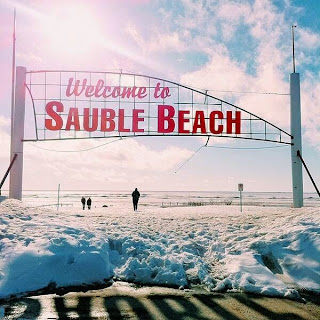
The Focus of this missive will be a various Global Issues. I will still include Various strategies and areas of lessons That can be used in a range of courses. And of course there will always be maps and mindson activities
Events
Oagee Spring Conference
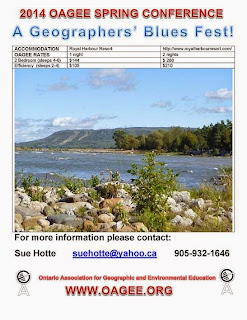
OAGEE Fall 2014 Conference Call for Presenters
Workshop and presentation proposals are now being accepted for the OAGEE Fall 2014. This Conference is to be held at Ryerson University, ON, October 17 & 18, 2014. The deadline for submissions is June 1, 2014.
Sessions will run Friday morning, Friday afternoon and Saturday morning. Each session will be 50 minutes in length, with the option for a double session if additional time is required. Field trip requests of 2-3 hours are preferred.
Each classroom will hold approximately 25-30 participants with chairs and tables. Hard wire and/or Wireless Internet access, a projector, speakers, connecting PC cables are available in most rooms; Mac users must bring their own connectors. Smart Boards are NOT available at Ryerson. We do have access to a computer lab with 42 workstations.
All applicable workshop and presentation proposals will be considered for the conference. However, we are encouraging potential presenters to consider providing sessions that focus on the following highlighted session themes:
Conference Main Theme is: Sustainability
• Inquiry based learning
• Revised curriculum for Geography in Ontario
• Evidence Based Learning
• Gr. 7 & 8 Program
• Physical geography
• Urban Studies
• Geo-technology
• Blended Learning
• Eco-Schools
• Geo-Literacy
• Geo-Numeracy
• Skills for Post-secondary
• Differentiated Instructions in the Geography Classroom
• Essentials of Geography (reaching out to ALL levels of students)
• Field studies
• First Nations studies
One presenter from each accepted workshop will receive one, $100 discount towards their registration fee for the conference. Additional presenters who wish to participate in OAGEE Fall 2014 Conference activities beyond their session are asked to register separately for the conference. Notifications regarding successful submissions will be provided by the end of June 2014.
Educational Alliance for a Sustainable Ontario
Monday May 5, 2014"FNMI Perspectives and ESD" 9:30 am - 12:00 pm OISE
I hope you are all enjoying this (finally!) warmer weather! Our next EASO meeting will be held on Monday May 5, 2014, at OISE. This meeting will explore "First Nations, Metis and Inuit Perspectives and ESD" .
Please note: this is a shorter meeting than we typically have and it will begin at 9:30 am (9:00 am arrival) until 12 noon.
Please RSVP by April 24, 2014.
Below you will find a list of updates from the EASO network. Please send any updates from your networks that you would like shared in this newsletter to esd_Ontario@lsf-lst.ca
If you have any questions, comments, or concerns, please do not hesitate to contact me at esd_ontario@lsf-lst.ca. Thank you all for your support and participation in EASO.
All the best, Angela Heagle Kielbowski
NAAEE/EECOM Conference
October 8-11 2014 in Ottawa, ON
This conference is usually kicked off by a one-day research symposium.
Joint EECOM (Canadian Network for Environmental Education and Communication/Reseau canadien d'education et de communication relatives à l'environnement) and NAAEE (North American Association for Environmental Education) Conference (43rd Annual NAAEE Conference).
This year's conference theme is "Building Momentum for the Next Chapter," and the call for presentations is available here. Be sure to follow us on Facebook and Twitter to stay connected! http://www.naaee.net/conference
OAGEE Fall Conference: October 17 - 18 @ Ryerson in Toronto
Detailed itinerary & prices will be available soon.
www.Oagee.org
 Maximum City offers award-winning summer programs and in-school curriculum in sustainable urbanism and civic literacy for students aged 13-18.
Maximum City offers award-winning summer programs and in-school curriculum in sustainable urbanism and civic literacy for students aged 13-18.
http://maximumcity.ca/
Student Mapping Competition
Canadian Cartographic Association (CCA)
http://cca-acc.org/wp-content/uploads/documents/CCA_Mapping_Annoucement.pdf
Issues
Climate Change
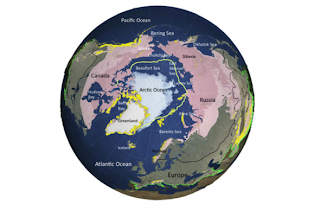
Climate Trends in the Arctic as Observed from Space: It's melting. Fast.
The ice cap is heating up & melting down at an alarming, not previously predicted rate
http://tiny.tw/3iMV
'Like a giant elevator to the stratosphere:' Newly discovered atmospheric layer may impact Earth's climate
An international team of researchers has discovered a previously unknown atmospheric phenomenon over the tropical West Pacific. Like in a giant elevator to the stratosphere, many chemical compounds emitted at the ground pass unfiltered through the so-called 'detergent layer' of the atmosphere, known as the 'OH shield.' The newly discovered phenomenon over the South Seas boosts ozone depletion in the polar regions and could have a significant influence on the future climate of the Earth.
http://www.sciencedaily.com/releases/2014/04/140404092931.htm
UN climate warning goes unheeded
The news from the UN is bad: None of us, we're told, not a single solitary one of us, will escape the consequences of climate change. Every individual, let alone nation, will be affected by the environmental crisis now unfolding around the planet.
http://www.thestar.com/news/gta/2014/04/03/un_climate_warning_goes_unheeded_hume.html
Agriculture
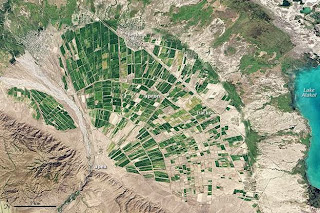
Alluvial Fan in Kazakhstan
http://tiny.tw/3iMW
Out of thin air: Using wind energy to make fertilizer
Did you know it's possible to use wind energy to make fertilizer? And did you know that it's being done right here in Minnesota, at the University of Minnesota's West Central Research & Outreach Center (WCROC) in Morris?
http://minnesotacornerstone.com/?p=1772
Population & Migration & Socio Economic Indicators
SOCIAL PROGRESS INDEX 2014
MEASURING NATIONAL PROGRESS – To truly advance social progress, we must learn to measure it, comprehensively and rigorously. The Social Progress Index offers a rich framework for measuring the multiple dimensions of social progress, benchmarking success, and catalyzing greater human wellbeing. The 2014 version of the Social Progress Index has improved upon the 2013 'beta' version through generous feedback from many observers. We continue to welcome your use and testing of our data, and feedback to help us continue to improve. Please watch our short video on the results of the Social Progress Index 2014._ fully interactive
http://www.socialprogressimperative.org/data/spi
Seven Billion – Typical Human – National Geographic Video
http://video.nationalgeographic.com/video/news/7-billion/ngm-7billion-typical?source=relatedvideo
India election: country awaits a demographic dividend or disaster
A generational shift is under way in India with half of the population under 24. How the 150m first-time voters cast their ballot will dictate the future
http://www.theguardian.com/world/2014/apr/07/india-election-demographic-dividend-disaster
Altar: The town where migrants shop for a perilous journey
In a Mexican border town, the shops are stocked for one thing - to equip migrants for the last leg of a long and sometimes fatal journey.
http://www.bbc.com/news/magazine-26870723
Sustainability
Is a Footprint the Right Metaphor for Ecological Impact?
http://blogs.scientificamerican.com/guest-blog/2014/04/02/is-a-footprint-the-right-metaphor-for-ecological-impact/
Urban
Visualizing 200 Years of Urban Sprawl in Paris, São Paulo, and L.A.
Two centuries ago, Paris, a city with a population of half a million, barely extended beyond its medieval footprint. São Paulo was still largely a small trading outpost for gold and exploration expeditions. And Los Angeles was just a pueblo of a few dozen buildings. By Richard Florida
Terrific Map animations ML
http://www.theatlanticcities.com/neighborhoods/2014/04/visualizing-200-years-urban-expansion-paris-sao-paulo-la/8794/
Urban story Maps of Cali Columbia
The World Urban Forum (WUF for their stands for World Urban Forum) is the Principal Cities World Conference, World's Premier Conference on Cities, organized every two years.
http://esri.co/geoapps/MapasTuristicos/
The Future of Transportation Atlantic Cities feature Report
http://www.theatlanticcities.com/special-report/future-of-transportation/
Resources & Energy
Global dip in renewable energy investment
Global investment in renewables fell by 14% during 2013, but the percentage of electricity generated by renewable sources still grew, a report shows.
http://www.bbc.com/news/science-environment-26923260
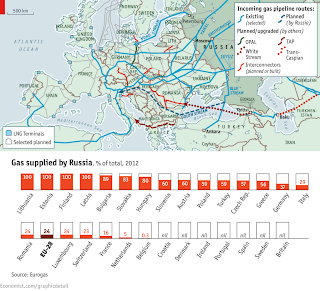
IPCC to debate future of fossil fuels at climate meeting
Read more: http://www.ctvnews.ca/sci-tech/ipcc-to-debate-future-of-fossil-fuels-at-climate-meeting-1.1762312#ixzz2yJGHBPJe
After concluding that global warming almost certainly is man-made and poses a grave threat to humanity, the UN-sponsored expert panel on climate change is moving on to the next phase: what to do about it.
The Intergovernmental Panel on Climate Change, or IPCC, will meet next week in Berlin to chart ways in which the world can curb the greenhouse gas emissions that scientists say are overheating the planet.
It is also trying to give estimates on what it would cost.
Read more: http://www.ctvnews.ca/sci-tech/ipcc-to-debate-future-of-fossil-fuels-at-climate-meeting-1.1762312#ixzz2yJGXx1AE
How American energy independence could change the world
The holy grail of American leaders over the past four decades, from Richard Nixon to Barack Obama, has been energy independence, and thanks to shale oil and gas, the dream could soon become reality.
http://www.bbc.com/news/business-23151813?ocid=socialflow_twitter
International Relations & Globalization
If not now, when?
This would be an especially good time for a change in America's relations with Cuba
The Economist http://tiny.tw/3iMU
Globalisation: good or bad?
Lewis Williamson outlines the main arguments for and against globalisation
http://www.bbc.com/news/science-environment-26923260
Disasters
It' s Officially Tornado Season: These Animations Show the Parts of the U.S. Most Likely to Get Hit
'North America has entered the beginning of peak tornado season, and the weather certainly reflects that. Today a major spring storm is barreling over the nation's center, and forecasters are warning to watch out for possible damaging winds, large hail, and tornadoes.
So perhaps now's the time to ask the age-old question: If you're terrified of twisters, where's the absolute worst place in the U.S. to live?
http://www.theatlanticcities.com/arts-and-lifestyle/2014/04/where-america-are-you-likely-see-tornadoes/8788/
Another Warning for the Northwest From Chile's Earthquake Hot Zone
As disaster agencies tally scattered deaths and damage from the 8.2-magnitude earthquake (and thankfullymodest tsunami) off the coast of northern Chile on Tuesday night, earthquake experts have been stressing two facts:
http://dotearth.blogs.nytimes.com/2014/04/02/another-warning-for-the-northwest-from-chiles-earthquake-hot-zone/
Tropical Depression Diagram
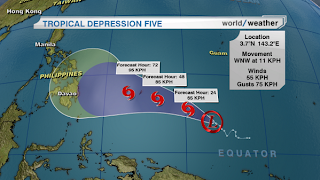
Topics & Teachables
Tools
7 Online Tools for Creating Charts & Diagrams
http://www.freetech4teachers.com/2014/04/7-online-tools-for-creating-charts.html#.U0QeYPldXTp
UrtheCast: a new tool for change
UrtheCast is committed to fostering global education and relief efforts worldwide, using advanced Earth Observation technology. From helping students detect geographical changes, to providing crucial footage for aid organizations responding to a crisis, UrtheCast will soon provide a powerful tool for change.
http://www.urthecast.com/community#mission
Topics
Tourism in Space –
A lesson that explores Space tourism. Pupils consider the demand, costs, impacts and work in groups. Could also be used for looking at different types of tourism
http://www.slideshare.net/JellyCarr/tourism-in-space-is-this-the-future
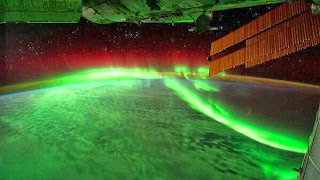
A stunning photograph of the Northern Lights seen from the International Space Station
NASA Wavelength
is your pathway into a digital collection of Earth and space science resources for educators of all levels – from elementary to college, to out-of-school programs. These resources, developed through funding of the NASA Science Mission Directorate (SMD), have undergone a peer-review process through which educators and scientists ensure the content is accurate and useful in an educational setting. Use NASA Wavelength to quickly and easily locate resources, connect them to other websites using atom feeds, and even share the resources you discover with others through social media and email.
http://nasawavelength.org/
Coastal Decision-making Tools
Geographic information systems (GIS) are mapping tools used to integrate, store, edit, analyze, share, and display geographic information. NOS provides a variety of GIS data products to the coastal management community. Pictured above is the Sea Level Rise and Coastal Flooding Impacts Viewer that uses local elevation data and visualization software to allow users to see how one to six feet of sea level rise might affect their coastal communities.
http://oceanservice.noaa.gov/tools/dmtools/
Resource: Geoguessr – Where in the World?
Employing EdTech within different subjects can sometimes be a challenge for teachers, especially when exploring for activities that really add value to teaching and learning. A great website, with a couple of great uses is Geoguessr.com, which draws from the technology from Google Street view, but challenges the user to try and locate where the randomly generated image is taken from. Five locations are provided, and your score points based on your guess, compared to the actual location of the image. Indeed, you are able to click around the location, trying to pick up clues, which offers fantastic opportunities to talk about geographical, language, or environmental clues.
We've known about Geoguessr for a while, but in a bid o enhance the website further, the Swedish developers have now placed localised versions into BETA, allowing you to focus solely on the USA, Japan, Sweden, or UK (<~ Click country to open), plus we have found that the site works well on most operating systems, including mobiles. On the original version of the game, you can share a link to play challenge others with the same game you played…now, there's a thought!
http://ukedchat.com/2014/02/25/resource-geoguessr-where-in-the-world/
Discover Geography
A brand new exciting resources website created for geography teachers by Discover the World Education and the Geographical Association to be launched by April 14th.
The site will be developed over the coming years. Initially, we will be offering you resources relating to Iceland. Later in 2014 you will find material on Norway, Azores and China. In early 2015 we plan to develop resources relating to Italy and beyond.
http://www.livingplanetblog.co.uk/2014/03/discover-geography-.html
European word translator
You have to try it - ML
http://ukdataexplorer.com/european-translator/
Want to learn the difference between a Cirrus and a Cumulus cloud? Our cloudspotting guide can help
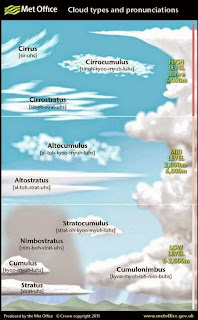
25 Biggest, Tallest, Deepest, And Smallest Places In The World
From the dark depths of the ocean to some of the highest peaks on Earth these are the 25 biggest, tallest, deepest, and smallest places in the world! –Great Visuals ML
http://tiny.tw/3iN3
SPATIALWORLDS Literacy, Geo-literacy!
The Spatialworlds blog is a repository of teaching resources, images, commentary and website links for those interested in spatial education, spatial technology and geography in schools.
http://spatialworlds.blogspot.ca/2014/03/literacy-geo-literacy.html?spref=tw
A New Geo-Tagged Storytelling Site Might Be The Ultimate Travel Tool
How do we discover new cities to visit? How do we remember where we've been? With all the tools at our fingertips, I'd still argue it's actually not all that easy. Hi, which just opened to the public today, is a beautifully designed way to find, share, and tell stories about places.
What Hi is, exactly, is kind of hard to explain so I tried to come up with some shorthand ways to describe it: Literary Yelp, Instagram Longreads, Foursquare for Cities, a crowdsourced New York Times Travel section.
http://gizmodo.com/a-new-geo-tagged-storytelling-site-might-be-the-ultimat-1551278242
Mark Lowry
Geography and Spatial Technologies Instructional Leader
Social World Studies and Humanities
Toronto District School Board
1 Civic Center Court, Toronto , M9C 2B3
Tel (416) 394-7269 Cell (416) 576 -4515
http://tdsbweb/_site/ViewItem.asp?siteid=63&menuid=63&pageid=63
http://geographysites.blogspot.ca/
twitter @geogmark






















